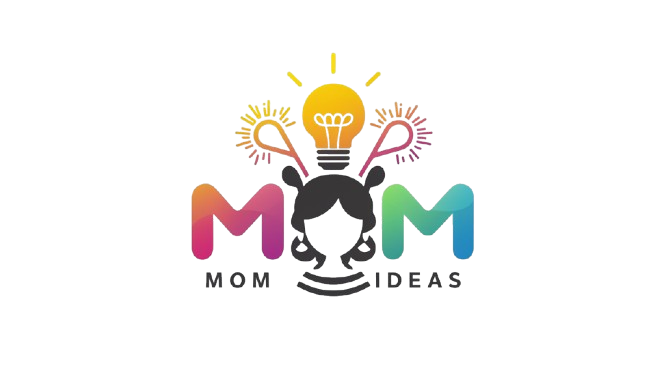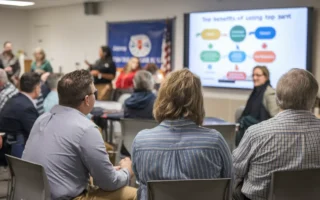The Developing Person Through the Lifespan 11th Edition is a comprehensive textbook by Kathleen Stassen Berger. It covers the entire human developmental process, from conception to death. The book provides a detailed look into physical, cognitive, and psychosocial development across different stages of life.
In this article, we’ll highlight key insights from the 11th edition that shed light on human growth, behavior, and development throughout the lifespan.
1. The Lifespan Perspective
Human development is a lifelong process. The lifespan perspective emphasizes that growth and change happen continuously, not just during childhood. Development is multidimensional, involving physical, cognitive, and psychosocial changes. These dimensions are interconnected and influence each other.
- Development occurs in stages, but people remain capable of growth and adaptation throughout life.
- Environmental factors, cultural influences, and individual choices shape development at every stage.
2. Genetic and Environmental Interactions
Both genetics and environment play crucial roles in human development. The book highlights the interaction between inherited traits and life experiences, referred to as the nature versus nurture debate.
- Genes provide the foundation for physical and psychological traits.
- The environment, including family, culture, and society, influences how these traits develop.
This interaction creates individual differences in development, leading to unique outcomes for each person.
3. Prenatal Development and Birth
The book provides an in-depth exploration of prenatal development, emphasizing the importance of the prenatal environment. It identifies three critical periods during pregnancy: the germinal, embryonic, and fetal stages.
- The germinal stage occurs in the first two weeks after conception, when the zygote forms and implants in the uterine wall.
- The embryonic stage (weeks 3-8) involves rapid cell division and the formation of major organs.
- The fetal stage (week 9 to birth) focuses on growth and the maturation of body systems.
Environmental factors, such as nutrition, maternal stress, and exposure to toxins, can significantly affect prenatal development.
4. Infancy: The First Two Years
Infancy is a period of rapid physical, cognitive, and emotional growth. The book emphasizes the importance of early experiences, including bonding, attachment, and brain development.
- Brain Development: The brain grows rapidly during infancy. Neural connections form through experiences, shaping future learning and behavior.
- Attachment: Infants develop emotional bonds with caregivers, known as attachment. Secure attachment is linked to positive emotional and social development later in life.
- Sensorimotor Stage: According to Jean Piaget, infants learn through sensory experiences and motor actions. This stage involves exploring the world through touch, sight, sound, and movement.
5. Early Childhood Development (Ages 2-6)
Early childhood is marked by rapid advances in language, motor skills, and social interaction. During this stage, children begin to assert independence and develop self-awareness.
- Language Development: Children rapidly acquire language skills, allowing them to communicate, express feelings, and understand others. Vocabulary grows significantly during this period.
- Cognitive Development: In Piaget’s preoperational stage, children use symbolic thinking and imagination but may struggle with logic. They tend to focus on one aspect of a situation, a concept called centration.
- Emotional Development: Children in early childhood develop self-concept and self-esteem. They learn to regulate emotions and form relationships with peers.
6. Middle Childhood (Ages 6-11)
Middle childhood is characterized by the development of logical thinking, improved motor skills, and expanding social relationships. During this period, children become more independent and competent.
- Cognitive Development: Children enter Piaget’s concrete operational stage, where they begin to think logically about concrete events. They can understand concepts like conservation, classification, and seriation.
- Social Comparison: Children start comparing themselves to others, which influences self-esteem. Peer relationships become increasingly important.
- Academic Skills: Literacy, numeracy, and problem-solving skills develop rapidly in middle childhood, laying the foundation for future academic success.
7. Adolescence (Ages 12-18)
Adolescence is a period of significant physical, cognitive, and emotional changes as individuals transition from childhood to adulthood. The book explores the challenges and opportunities that come with this developmental stage.
- Physical Changes: Puberty leads to rapid physical growth and sexual maturation. Hormonal changes can also affect mood and behavior.
- Cognitive Development: Adolescents enter Piaget’s formal operational stage, where they develop the ability to think abstractly and hypothetically. This new level of thinking allows them to consider multiple perspectives and engage in more complex problem-solving.
- Identity Formation: According to Erik Erikson, adolescence is a crucial period for identity formation. Teens explore different roles, beliefs, and values as they search for a sense of self.
8. Emerging Adulthood (Ages 18-25)
Emerging adulthood is a relatively new developmental stage identified by Jeffrey Arnett. It captures the period between adolescence and full-fledged adulthood, where individuals continue exploring their identity, career, and relationships.
- Identity Exploration: Emerging adults experiment with various possibilities in work, relationships, and lifestyle before committing to long-term decisions.
- Instability: This stage is marked by changes in living arrangements, jobs, and relationships as individuals seek stability.
- Self-Focus: Emerging adults focus on self-discovery and personal growth during this stage.
9. Adulthood: Early (Ages 25-40), Middle (Ages 40-65), and Late (Ages 65+)
Adulthood encompasses several stages, each with distinct developmental tasks and challenges. The book highlights the diversity of experiences and changes during these years.
Early Adulthood:
- Intimacy vs. Isolation: Erikson’s stage for early adulthood involves forming deep relationships with others. Successful navigation leads to strong, meaningful connections, while failure can result in loneliness.
- Career and Family: Individuals often focus on establishing a career, forming long-term romantic relationships, and starting families.
Middle Adulthood:
- Generativity vs. Stagnation: In this stage, adults seek to contribute to society through work, family, and community involvement. Generativity involves leaving a lasting legacy, while stagnation can result from feeling unproductive.
- Physical Changes: Aging begins to affect physical abilities, and many individuals become more health-conscious.
Late Adulthood:
- Integrity vs. Despair: In Erikson’s final stage, individuals reflect on their lives. Those who feel they have lived meaningful lives achieve a sense of integrity, while those who have regrets may experience despair.
- Cognitive and Physical Decline: While some cognitive decline occurs, many older adults remain mentally sharp. Physical abilities may diminish, but staying active can mitigate these changes.
10. The Role of Culture in Development
Culture plays a significant role in shaping human development. The book emphasizes that development is influenced by the cultural context in which individuals live. Values, traditions, and social norms impact how people think, behave, and grow.
- Individualism vs. Collectivism: Cultures that emphasize individualism encourage independence and self-reliance, while collectivist cultures value group harmony and interdependence.
- Cultural Norms: Expectations for behavior, achievement, and social roles vary across cultures and influence development throughout life.
11. The Importance of Social Relationships
Social relationships are essential for human development at every stage of life. The book highlights the impact of family, friends, and social networks on emotional, cognitive, and physical well-being.
- Attachment Theory: Early attachment patterns with caregivers influence future relationships. Secure attachment fosters trust and emotional stability.
- Social Support: Throughout life, strong social connections improve mental and physical health. Positive relationships buffer against stress and promote resilience.
12. Cognitive Decline and Aging
Cognitive decline is a natural part of aging, but the book emphasizes that this process varies widely among individuals. While memory and processing speed may decrease, other areas, like wisdom and emotional regulation, often improve.
- Neuroplasticity: The brain remains capable of change and adaptation throughout life, allowing older adults to continue learning new skills and information.
- Cognitive Reserve: Factors like education, mental stimulation, and physical activity can help maintain cognitive function in old age.
13. Death and Dying
The book addresses the final stage of life: death. It explores how individuals and cultures approach death and dying, highlighting the emotional, psychological, and social aspects of this process.
- Stages of Grief: Elisabeth Kübler-Ross identified five stages of grief: denial, anger, bargaining, depression, and acceptance. These stages help individuals cope with loss and the prospect of death.
- End-of-Life Care: The book discusses the importance of providing compassionate care to those at the end of life, emphasizing the need for dignity and respect during this time.
Conclusion
The Developing Person Through the Lifespan 11th Edition provides a thorough examination of human development from conception to death. It emphasizes the importance of understanding the complex interactions between genetics, environment, culture, and social relationships in shaping individual growth. The book offers valuable insights into each stage of life, helping readers appreciate the diversity of the human experience and the continuous nature of development. Whether you’re a student of psychology, an educator, or simply interested in human behavior, the 11th edition provides a wealth of knowledge on the dynamic process of development across the lifespan.




